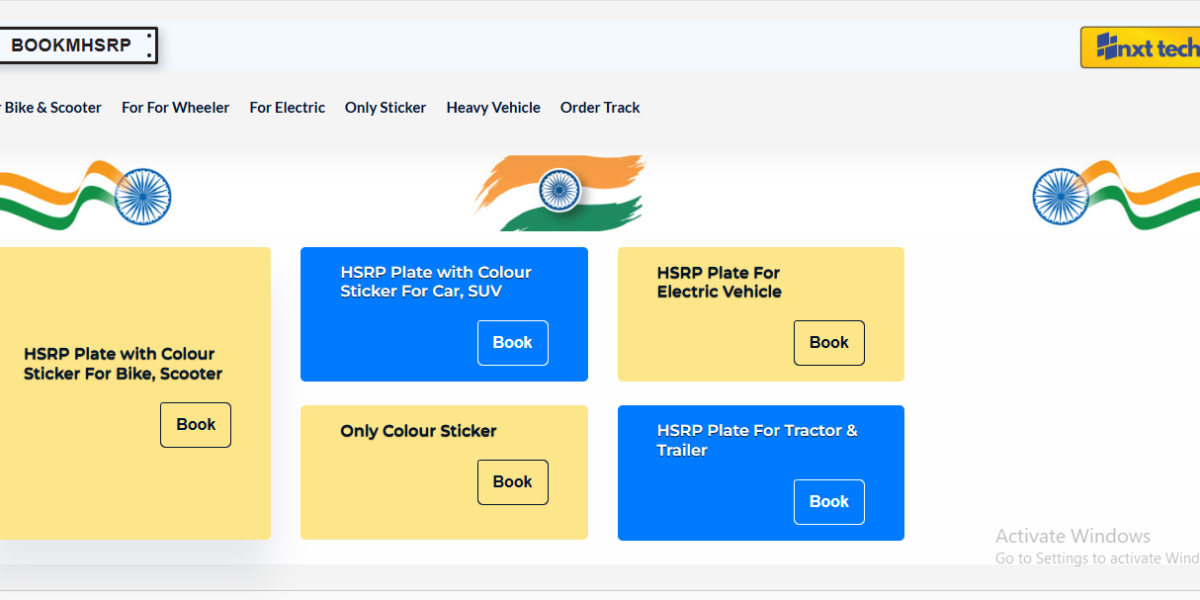High-Security Registration Plates (HSRP) are the new standard for vehicle registration in India. Introduced by the Ministry of Road Transport and Highways (MoRTH), HSRP is designed to enhance the security of vehicles, curb vehicle theft, and prevent the misuse of forged registration plates. The adoption of HSRP registration is part of India’s ongoing efforts to modernize road safety and transportation systems, as well as to comply with global standards.
This article will provide a comprehensive overview of HSRP registration, its importance, the process, and other crucial details associated with it.
What is HSRP?
High-Security Registration Plates (HSRP) are advanced vehicle registration plates that have been mandated by the Government of India for all motor vehicles. These plates are made of aluminum and come with several high-tech features designed to make them tamper-proof and difficult to duplicate. The introduction of HSRP was aimed at addressing the rising issues of vehicle theft, illegal activities involving unregistered vehicles, and counterfeit number plates.
HSRPs are issued by the government and come with several distinct features, including:
-
Tamper-Proof Technology: The plates are designed to be durable and are resistant to tampering. They are secured using a unique lock that is difficult to remove or alter.
-
Reflective Sheeting: The plates are made with reflective materials, making them more visible at night.
-
Unique Laser Code: Every HSRP comes with a unique laser-etched code Hsrp registration , which is specific to each vehicle. This code can be used to track and authenticate the vehicle.
-
Color-Coded Stickers: The HSRP also includes color-coded stickers that contain the vehicle’s details such as the engine number and chassis number.
-
QR Code: The plate includes a QR code, which can be scanned to access the vehicle’s details and verify its registration information.
The key aim of HSRP is to streamline vehicle identification, enhance security, and deter criminal activities like theft and illegal usage of stolen vehicles.
Why is HSRP Important?
The introduction of HSRP plates is essential for several reasons:
-
Enhanced Vehicle Security: With the advent of high-quality security features, the likelihood of vehicle theft or the use of stolen vehicles in illegal activities significantly decreases.
-
Reduction in Vehicle Fraud: HSRPs reduce the chances of counterfeit plates being used, a practice that has been common in many regions of India. The unique identification number and holograms make it impossible to replicate the plates.
-
Improved Law Enforcement: Law enforcement authorities can quickly identify vehicles involved in criminal activities through the HSRP’s unique identification number.
-
Safety: The reflective coating on the HSRP makes vehicles more visible, especially at night, reducing the chances of accidents.
-
Digital Integration: The introduction of QR codes and other digital features allows for better data collection and management, enabling faster identification of vehicles during checkpoints or road accidents.
Who Needs to Register for HSRP?
The HSRP is mandatory for all vehicles in India, including:
-
New Vehicles: Any vehicle that is registered for the first time must be issued an HSRP.
-
Old Vehicles: Older vehicles, which are already registered, also need to comply with the HSRP registration requirement. The timeline for implementing this may vary depending on the region, but in many states, older vehicles are required to replace their old plates with HSRPs.
As of now, the HSRP system is mandatory for all vehicles, including two-wheelers, four-wheelers, commercial vehicles, and others. However, the timeline for implementation may vary from state to state, and it’s important to check the regulations in your area.
How to Register for HSRP
The process for registering your vehicle for HSRP plates is simple and can be done online or offline, depending on your location and the vehicle’s registration details. Here’s a step-by-step guide on how to get HSRP plates:
Online Registration Process
-
Visit the Official Portal: Visit the official government website or the portal designated for HSRP registration in your state. Some states may have their own portals, so be sure to check local government websites.
-
Enter Vehicle Details: Input your vehicle’s registration number, chassis number, engine number, and other required information. This data will be cross-checked with the Regional Transport Office (RTO) records.
-
Payment: Once the information is verified, proceed to make the payment for the HSRP registration. Payment can usually be made via credit/debit card or other online payment methods.
-
Choose Plate Type: You will be given the option to choose your preferred plate type. The cost may vary depending on the type of vehicle and the features you select.
-
Schedule Appointment for Plate Installation: After making the payment, you can schedule an appointment at an authorized HSRP installation center. Make sure to carry the vehicle’s original documents such as the RC (Registration Certificate) and proof of identity.
Offline Registration Process
-
Visit the RTO Office: You can also visit the local RTO office to apply for HSRP registration. The RTO will verify the vehicle details and provide a form to be filled out.
-
Submit Documents: You will need to submit your vehicle’s RC book, proof of identity, and address proof.
-
Pay Fees: The fees for the registration and plate installation will be collected at the RTO office.
-
Installation of Plates: Once the payment is made, the RTO will either issue the plates directly or provide a schedule for plate installation at an authorized center.
HSRP Plate Installation
Once the HSRP registration is complete, you will be asked to visit an authorized center to get your high-security plates installed. The installation process is quick and involves the application of the new plates to your vehicle using tamper-proof bolts.
Cost of HSRP Registration
The cost of HSRP registration may vary depending on the state and the type of vehicle. On average, the cost ranges from ₹400 to ₹1500 for a car, and for two-wheelers, it may range from ₹200 to ₹500. The price depends on factors such as the vehicle category, the type of plate selected (standard or advanced), and the state-specific charges.
Benefits of HSRP Registration
-
Increased Security: With features like the laser code, reflective sheeting, and tamper-proof bolts, HSRP provides a higher level of security for your vehicle.
-
Official Recognition: HSRP serves as an official identifier for vehicles, which can help in legal matters and disputes.
-
Reduced Counterfeit: By reducing the chances of counterfeit number plates, HSRP ensures that only legitimate vehicles are on the road.
-
Compliance with Legal Norms: HSRP registration ensures that your vehicle complies with the latest norms set by the Ministry of Road Transport and Highways (MoRTH).
Conclusion
HSRP registration is a significant step in improving vehicle security, reducing fraud, and enhancing road safety. It’s important for all vehicle owners to comply with the new regulations to avoid penalties and ensure that their vehicles are secure and identifiable. By adopting HSRP plates, India moves closer to a more advanced and secure transportation infrastructure. Whether you are registering a new vehicle or upgrading an old one, understanding the HSRP registration process is essential to make sure that your vehicle is compliant with the law.












